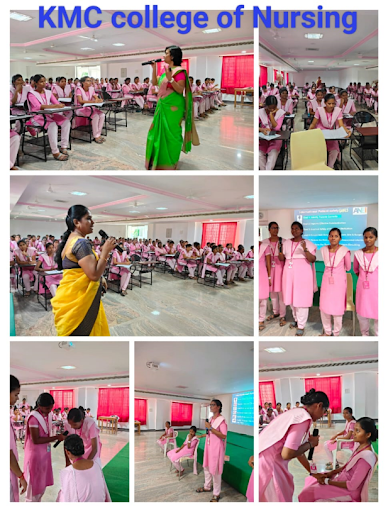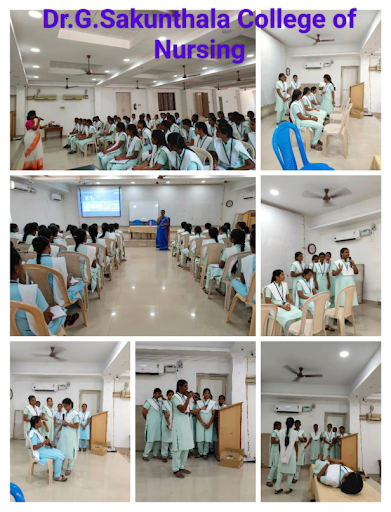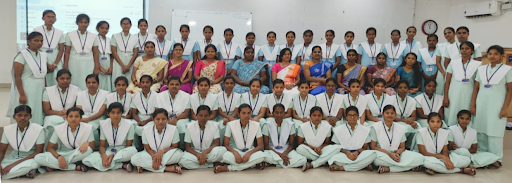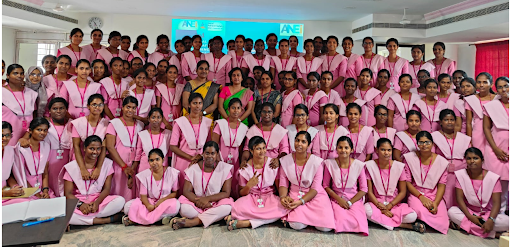Preconference Workshop on International patient safety Goals (IPSG)
Kasthuri. R1, Lucy Grace. T2
1Safety Nurse, Kauvery Hospital, Tennur, Trichy
2Nurse Educator, Kauvery Hospital, Tennur, Trichy
*Correspondence: [email protected]
Background
The 72nd World Health Assembly in 2019 adopted resolution on Global Action on Patient Safety and mandated for development of a global patient safety action plan which was adopted by 74th World Health Assembly in 2021 with a vision of a world in which no one is harmed in health care, and every patient receives safe and respectful care, every time, everywhere. World Patient Safety Day 2023 will be observed on 17 September under the theme Engaging patients for patient safety.
The Association of Nurse Executives (India)ANEI Celebrating 3rd ANEI Annual Patient Safety Conference for young nursing students across the country. This year, nursing students all around the nation have been made aware of the international patient safety target.
Aims
It aims to impart orientation on International Patient Safety Goals to the Nursing Students across the country, create awareness regarding patient safety and avoiding preventable harm in hospital settings and to create interest among nursing students to learn more about Patient Safety.
Brief review of the Pre-conference workshop
We had the privilege of participating in this preconference workshop with ANEI and Ms. Mahalakshmi, Nursing Superintendent at Kauvery Hospital’s Tennur unit, has chosen us to assume the responsibility of being a trainer for this pre-conference workshop.
A preconference workshop on IPSG will be conducted at Kauvery College of Nursing and Dr. G. Sakunthala College of Nursing. Prior approval was obtained from the principals of both colleges for this purpose.
Our inaugural pre-conference for third-year B.Sc (N) and 2nd year DGNM nursing students of Kauvery College of Nursing took place on 25th September, 2023.A total of 100 students were participated in this conference
The second preconference workshop held on October 05, 2023 at Dr. G. Sakunthala College of Nursing was attended by third-year B.Sc (N) and third-year DGNM nursing students. In total, 57 students actively participated in the workshop.
Morning Session
Patient safety is fundamental to the provision of health care in all settings. However, avoidable adverse events, errors and risks associated with health care remain a major challenge for patient safety globally.
Prior to the session, a link to the Pretest Questionnaire was sent to all students, prompting them to complete the test.
We have unfolded the theme and gave a brief overview of the International Patient Safety Goals (IPSG). In that we have focused What are IPSGs? Why Patient Safety is a serious concern in Clinical Settings? And What can be done to avert or minimize Preventable Harm to Patients?
1. The first Goal Identify Patient Correctly
It was led by Ms. Lucy Grace, Nurse educator. During her presentation, she has been centered Why Do We Need to Identify Patients? How are Patients Identified? When Should a Patient Be Identified?
Before administration of any medication, administration of blood and blood products, collection of blood and other samples, shift hand over, shifting patient, serving food, receiving the patient, placing ID Band, we’ve taught them to recheck the name and UHID on the ID band, double-check in the patient file and get confirmation from the patient whenever possible.
2. The Second Goal Improve Effective Communication
She has taught Handover communication, wherein she covered topics such as
- ISBAR
- Shift Handover Template for handing over
- Interdepartmental Transfer Template for handover
- In Verbal and telephone commands and how to
- Report Critical Test Results
3. The Third Goal Improve Safety of High Alert Medication
All drugs can be part of a medication error/mistake. Those medications if involved in an error causes catastrophic results in a patient are identified as high alert medications.
We have provided instruction on the prescription, transcription, dispensing, administration policies and labeling, storage, LASA-Look Alike Sound Alike and Narcotics Policy-Maintain narcotic register, return of empty & broken ampules
4. The Fourth Goal Ensure Safe Surgery-Right Patient, Site & Surgery
These goals are in place to mitigate the occurrence of surgical errors such as Wrong-Site, Wrong-Procedure and Wrong-Patient Surgery.
We taught about the protocols and WHO check list -Pre Operative Check List, Pre-operative Site Marking and
Surgical Safety Checklist includes five important steps,
- Briefing-Before OT list of each patient (if different staff for each patient, eg. emergency list)
- Sign in-Before induction of anesthesia
- Time Out- Before skin incision
- Sign Out-Before patient leaves operating rooms
- Debriefing -At the end of each case (Evaluate list, Learn from incidents, Remedy problems) and we have presented a series of WHO safety checklist videos-Sign in, Time out and Sign out
5. The Fifth Goal Reduce the Risk of Healthcare Associated Infection
Any infection which was not present while coming to the hospital and acquired by a patient while being in the hospital.
Ex:
- Catheter Associated Urinary Tract Infection (CAUTI)
- Ventilator Associated Pneumonia (VAP)
- Central Line Associated Blood Stream Infection (CLABSI)
- Surgical Site Infection (SSI)
Our focus was on educating individuals about the importance of hand hygiene practices and the utilization of care bundles.
6. The Sixth Goal Reduce the Risk of Patient Harm Resulting from Falls
A Patient Fall is an unplanned descent to the floor with or without injury to the patient.
I have instructed on the various factors that contribute to accidental falls in patients and specifically focusing on
- Fall Prevention – Risk Reduction Strategy,
- Fall Risk Assessment-Morse fall risk assessment scale
- Post fall assessment
- Risk Reduction Activities and
- Consequences of Fall.
7. The Seventh Goal Improve the safety of clinical alarms
Monitoring and responding to alarm signals. Checking individual alarm signals for accurate settings, proper functioning and detectability.
I have instructed the significance of on infusion pump, monitor sounds, ventilator sounds, emergency codes and call bell systems.
The rationale behind this imperative goal is to effectively mitigate risks posed by alarm-related errors or failures in various healthcare settings.
Afternoon session
We have organized a role play activity centered around the IPSG goals. We divided into groups and assigned a specific goal to each group. The students demonstrated exceptional performance and each individual participated with great enthusiasm. Through the use of a hyperlink, we carried out a post-test and obtained feedback.
The experience we had with the students was truly remarkable. Prior to engaging in direct patient care, students were provided with a valuable opportunity to familiarize themselves with the goals of the International Patient Safety Goals (IPSG).
We express our gratitude to the ANEI team for organizing this program, and we extend our heartfelt thanks to our nursing superintendent for their continuous encouragement and support throughout this schedule.
Patient Safety is at the core of everything nurses do!
Photo Gallery



Dr. G. Sakunthala college of Nursing, Trichy

KMC College of Nursing,Trichy

R. Kasthuri
Safety Nurse

T. Lucy Grace,
Nurse Educator

